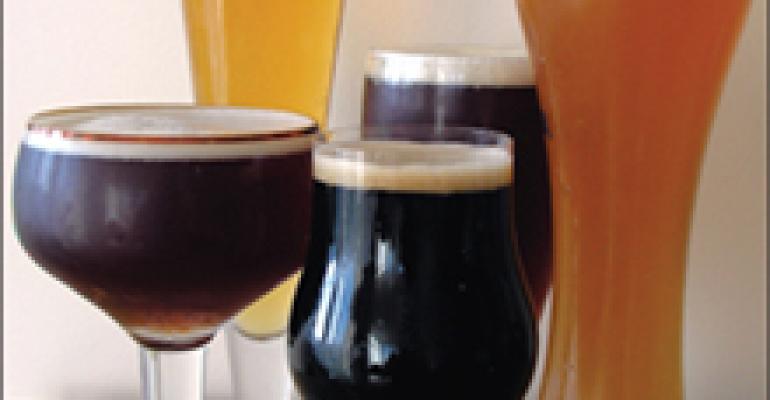Cast a glance across the bar at almost any restaurant, cafe, pub or tavern and chances are you’ll find a wealth of glassware. For certain you’ll see wine glasses, in at least still and sparkling wine formats. You may even find individual designs for both red and white wines or even different, larger shapes for brandishing with the more expensive bottles. There will be highball and rocks glasses, plus cocktail glasses for martinis and other drinks served straight up, and maybe another style or three for margaritas, brandies, and other specialty cocktails and spirits.
But for beer? Well, if the bar is like the vast majority of others in the county, ales and lagers in all their styles and permutations will be accorded but one lonely and, let’s face it, rather homely vessel: the shaker glass.
Frankly, beer deserves better. Walk into any cafe in Belgium, where beer is treated with the same respect as is wine, and you will find different glasses for not only each style of beer, but often every individual brand. In Bavaria, pilsners are poured in one style of glass, pale lagers in another and wheat beers in a very stylish third.
Even in England, where pints of best bitter and ordinary lager comprise the vast majority of all beer sold, pubs will stock specialized glassware for stronger or more full-bodied brews.
But aping the practices of the Europeans is not why it’s recommendable to break out of the single beer glass rut. It’s all about maximizing the flavors of premium beers and driving sales of the high-margin brews with eye-catching presentation.
Just as it has been proven that different wines simply taste better when presented in specific glass shapes, so too is there evidence that the taste of various beers can be altered by the style of vessel in which they are served. With their robust aromas and assertively dry characters, for example, pale ales show their best side when poured into a straight-sided or slightly sloped glass with a wide mouth. More effervescent pilsners, on the other hand, benefit from taller, thinner glasses for the same reason sparkling wines are offered in flutes: The design concentrates the bubbles and accentuates aroma.
Stronger ales and doppelbocks are at their best in rounded, snifter-like or tulip shaped glasses, so that their rich hues and robust aromas may be properly savored and appreciated.
None of this, of course, is going to happen in a shaker glass. Further, where stronger beers are concerned, size can be as important as shape, since offering 16 ounces of, say, a 10-percent-alcohol barley wine is not necessarily such a good idea.
Operators also can get a boost from the aesthetics of beer glassware. Consider the effect of a half-liter of Bavarian-style wheat beer being carried across the room and served to the lucky woman at table 10. Elegant, statuesque and topped with a fluffy cap of pure white foam, the glass is going to catch customers’ eyes. Before you know it, premium priced wheat beers will be flying across the bar. The same effect will hold true for barley wines, Belgian ales and even ultrapremium craft beers, each poured from the tap into their own signature glasses.
Often, operators embarking upon a premium beer program for the first time have concerns about how to best make the customer conscious of the variety of beers being stocked. Highlighting the beers in carefully chosen and properly presented glassware remains one of the most effective ways to maximize awareness, not to mention highly profitable sales of premium beer.




